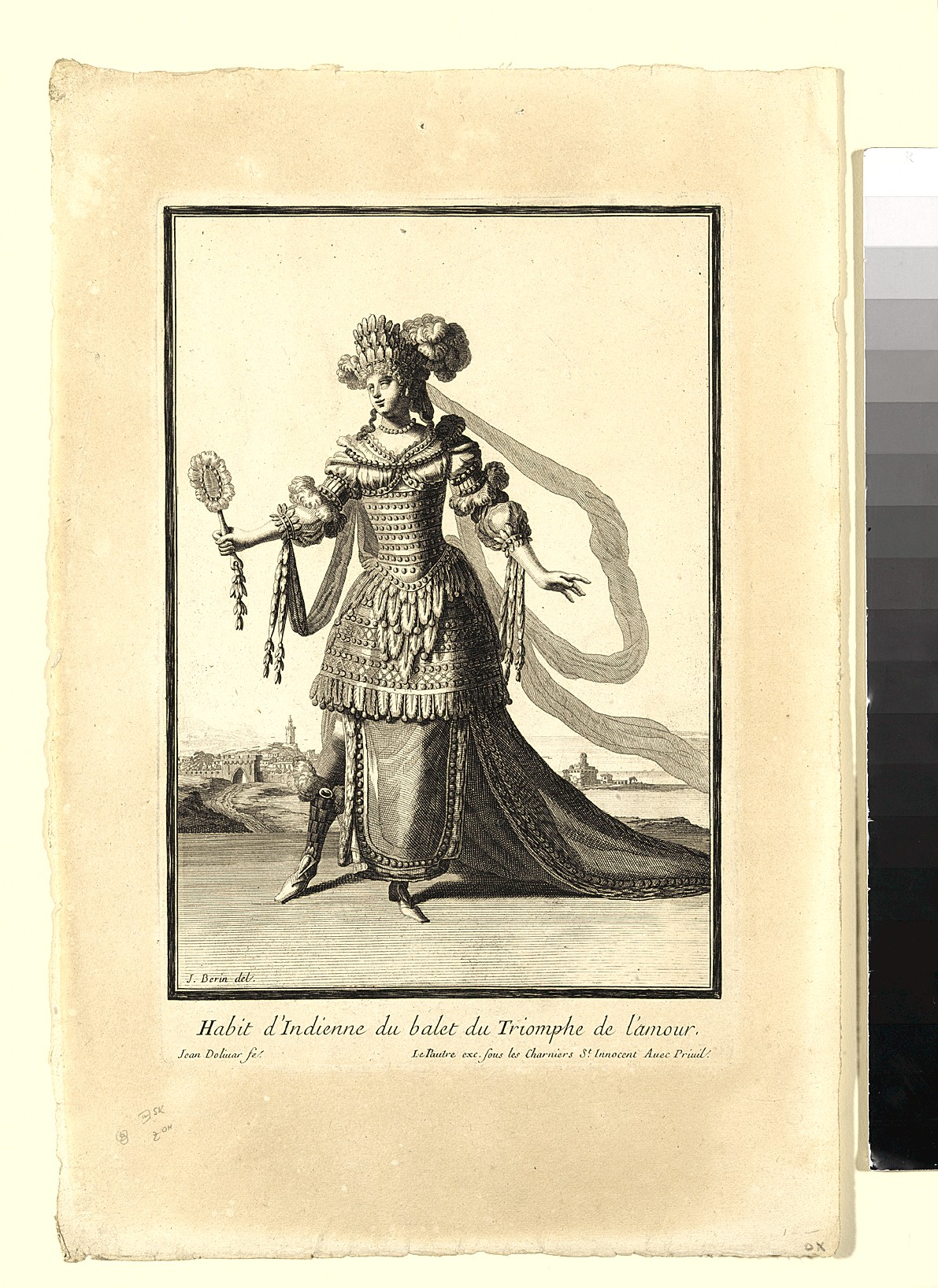Costume of an Indian Woman from the Ballet "Triumph of Love" (Habit d'Indienne du balet du Triomphe de l'amour)
Juan Dolivar Spanish
After Jean Berain French
Printed by Jacques LePautre French
Not on view
Etching and engraving with a design for a costume for an Indian woman, part of the collection of costume designs for the ballet 'Triomphe de l'Amour' (Triumph of Love), created by Juan Dolivar and printed by Jacques LePautre after a design by Jean I Berain. Entrusted with drawings for costumes, stage sets, and royal ceremonies at the 'Academie Royale de la Musique' since 1680, Berain's ingenious creations took acanthus and laurel leaves, palmettes and grotesques, mixing them with dancers, acrobats, monkeys and satyrs, to create his own, imaginative, theatrical world. His designs were multiplied and disseminated by means of engravings, his design motifs and manner objects becoming highly influential in the closing years of the seventeenth century. Like this print, many of his designs were for costumes intended for the performances of the Royal Academy of Music.
The plate consists of a ballet dancer in costume, slightly turned toward her left, holding a mirror with feathers and gemstones in her right hand. Her costume is made up of a tight bodice and short skirt, both decorated with horizontal strips of stones, possibly gold- or silver-colored stones, over a longer skirt with two slits in the front and a long train on the back. From the lower part of the bodice hang long feathers, and the borders of the skirts are also made up of strips of feathers. The puff sleeves are adorned by a cuff above the elbow, which is surrounded by more feathers, and strips of feathers hand from the cuff, which wraps around her forearm. She wears wight hose and calf-length boots, also decorated with feathers, and with an oval stone on the front. She wears a large headdress with gemstones and feathers, with a long gauze veil that flows behind her back; her neck is wrapped by a necklace of stones or pearls. Behind her, to the left, is a town enclosed by a crenellated wall with a door; to the right, is a group of factories bordering a lake.
Due to rights restrictions, this image cannot be enlarged, viewed at full screen, or downloaded.
This artwork is meant to be viewed from right to left. Scroll left to view more.






